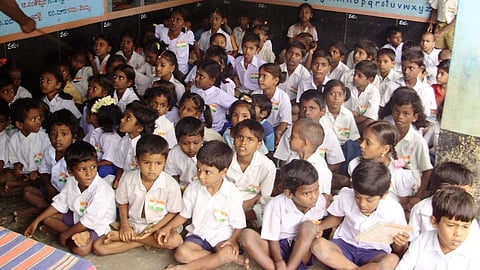

A study published in the journal Nature yesterday, Wednesday, February 5, 2025, titled Children’s Arithmetic Skills Do Not Transfer Between Applied and Academic Math, reveals that Indian teaching practices fail to equip students with the skills to apply mathematics in real-world settings.
Conducted by a team of researchers led by Nobel Prize-winning economists Abhijit Banerjee and Esther Duflo, the study highlights a significant disconnect between the math skills children use in practical scenarios and those taught in schools.
The research, divided into three sub-studies, involved 1,436 working children from vegetable markets in Delhi and Kolkata, alongside 471 school-going children aged 13 to 15 with no market experience. The study aimed to explore whether the arithmetic skills used by working children in market settings could translate to the abstract math taught in classrooms.
The idea for the study originated during one of Duflo’s visits to India, where she observed working children effortlessly performing complex mental calculations while selling vegetables. This prompted her to investigate whether these practical skills could transfer to academic contexts, she told The Hindu.
The findings, however, revealed a stark contrast. While working children excelled in real-world calculations, they struggled with formal math problems, and school-going children performed poorly in practical scenarios despite better results in academic tests.
In the first sub-study, 201 working children were tested on both market-based and abstract math problems. When asked to calculate costs for unusual quantities (example, 800 grams of potatoes at Rs 20 per kilo), 95-98 per cent of them solved these problems mentally with ease. However, only 52 per cent could solve similar hypothetical transactions involving unfamiliar goods and prices.
In contrast, when presented with written math problems from the Annual State of Education Report (ASER) test, only 32 per cent of working children could divide a three-digit number by a one-digit number, and just 54 per cent could solve basic subtraction problems.
The second sub-study, involving 400 working children across 39 markets, found that 96-99 per cent could correctly calculate amounts and changes in market transactions. Yet, only 15 per cent could perform division correctly on the ASER test.
Similarly, when 200 school-going children were tested in a simulated market setting, 56 per cent passed division-level ASER tests, but only 63 per cent, 51 per cent, and 69 per cent of the children completed three respective market transactions correctly, despite having access to pen and paper.
A subsequent study increased the complexity of real-life math problems, and only 10 per cent of school children could solve them. Additionally, when both groups were given a concrete word problem mimicking a market scenario, 36 per cent of working children answered correctly, compared to just 1 per cent of school-going children.
The study concludes that current teaching methods fail to leverage the intuitive math strategies developed by working children. For instance, while a working child might struggle to subtract 19 from 27 abstractly, they can quickly solve it when framed as a real-world problem, such as calculating remaining tomatoes. The findings call for a pedagogical shift, emphasising curricula that connect abstract math concepts to meaningful, real-world contexts.
Speaking of the study’s findings in greater detail, she says, “It also calls for changes in how math is introduced to children, and that pairing intuitive and abstract maths in pre-school, kindergarten and first grade in playway method through group games has a durable impact.”.
